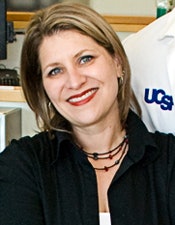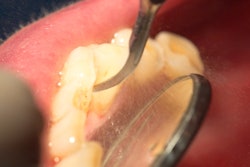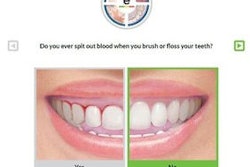
Drilling and filling may temporarily remove caries, but conventional dentistry doesn't address the underlying mechanisms that lead to the disease in the first place. That's why the profession has slowly begun to embrace prevention measures, such as caries management by risk assessment (CAMBRA).
 Gwendolyn Essex, RDH, EdD.
Gwendolyn Essex, RDH, EdD.Because CAMBRA is so different from traditional, repair-focused dentistry, implementing it in your office requires a serious commitment from everyone on the dental team. However, the time and effort to set up a prevention-first practice is well worth it for your patients, according to Gwendolyn Essex, RDH, EdD, an associate professor of diagnostic sciences at the University of the Pacific Arthur A. Dugoni School of Dentistry in San Francisco.
"I don't want to pretend that it's easy," Essex told DrBicuspid.com. "But when you are able to actually show a patient that they don't have to feel bad about their oral health, that we can treat them, it makes it all worth it."
CAMBRA basics
CAMBRA is about creating an individualized treatment plan based on a patient's risk of developing caries. Both the ADA and the California Dental Association (CDA) have forms on their websites to help assess caries risk for children and adults, and the University of California San Francisco (UCSF) even developed a CAMBRA iPhone and iPad app.
 The website for MyCAMBRA, an app that helps practitioners assess their patients' caries risk. Image courtesy of UCSF.
The website for MyCAMBRA, an app that helps practitioners assess their patients' caries risk. Image courtesy of UCSF.Essentially, risk status is assessed through a combination of disease indicators and risk and protective factors. Each of the CAMBRA forms vary slightly from each other in the listed criteria, but they all include lifestyle and biological factors, such as visible cavities, naturally deep pits and fissures, not living in a fluoridated community, and frequent snacking.
Once patients' overall risk has been assessed, they are categorized as having a low, moderate, high, or extreme risk. Treatment is then coordinated based on their assigned risk level.
"For a high-risk patient, that might mean more frequent radiographs to make sure we're on top of things. We might consider recommending a chlorhexidine regimen. We would also be very likely to give them a prescription-level fluoride toothpaste," Essex said. "For low and moderate risk, we should also look at how we're doing things. If you have a patient with five or six years of radiographs and nothing has changed, maybe they don't need radiographs every year."
With CAMBRA, patients are reassessed for risk at every visit and are moved to a new risk status only if their disease and protective factors have changed to indicate they belong at a new risk status.
Considerations for implementation
If you're considering implementing CAMBRA in your practice, there are a few things you should know. The first is that insurance hasn't exactly caught up with prevention-first model, and, while there are new codes for CAMBRA strategies, having a code doesn't guarantee reimbursement.
“We should be doing what's evidence-based and what our patients need”
"We, as a profession, have to put pressure on the insurance companies," Essex said. "We should be doing what's evidence-based and what our patients need, not what insurance companies pay for."
Because insurance may not pay for additional appointments and treatments for high-risk patients, that means those patients will have to pay more out of pocket. In this case, Essex stresses to her patients the long-term savings of preventive care.
"Talk with your patients about the benefits of prevention versus repair," she said. "For instance, a patient may say, 'Can't you just do a filling and take care of it?' Yes, we can do a filling, but it's only a matter of time before it gets worse."
Implementing CAMBRA requires a time and monetary commitment from your patients, but it's also difficult for the practice to shift its model of care, so one person cannot make the change alone, Essex noted.
"Anything big like this is going to take a lot of teamwork," she said. "You're making a real commitment."
Essex suggested that everyone on the team have a role during the transition and to start off with a small segment of your practice, such as new patients. She also recommended bringing lunch into the office during the transition week, so that your team can talk through any revelations or challenges. And while the transition to CAMBRA may be daunting, the effort is worth it in the end, Essex said.
"Think about that patient who feels terrible about their oral health. How amazing would it feel to get that patient to go for a year without new decay?" she said. "To me, that's a big motivator."



















